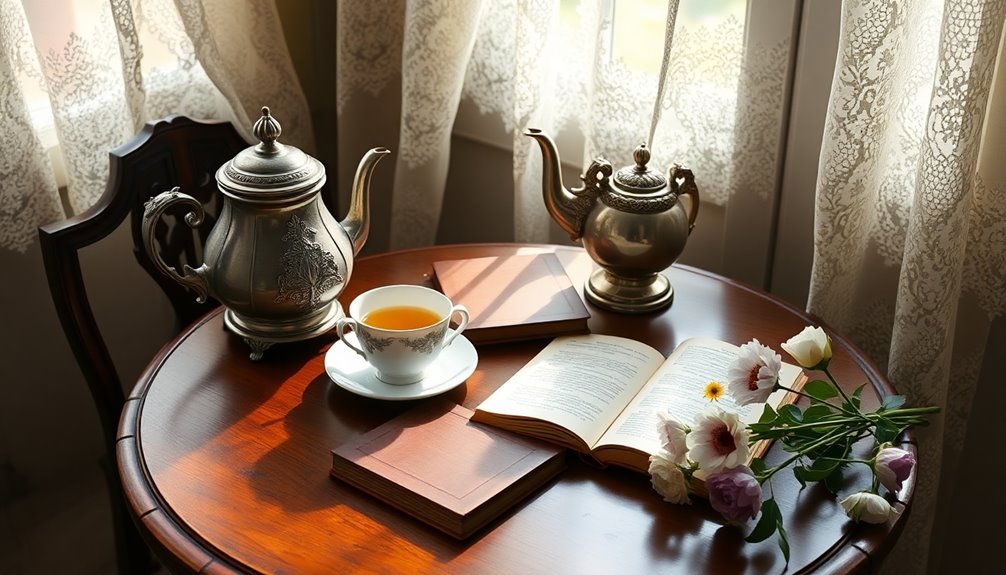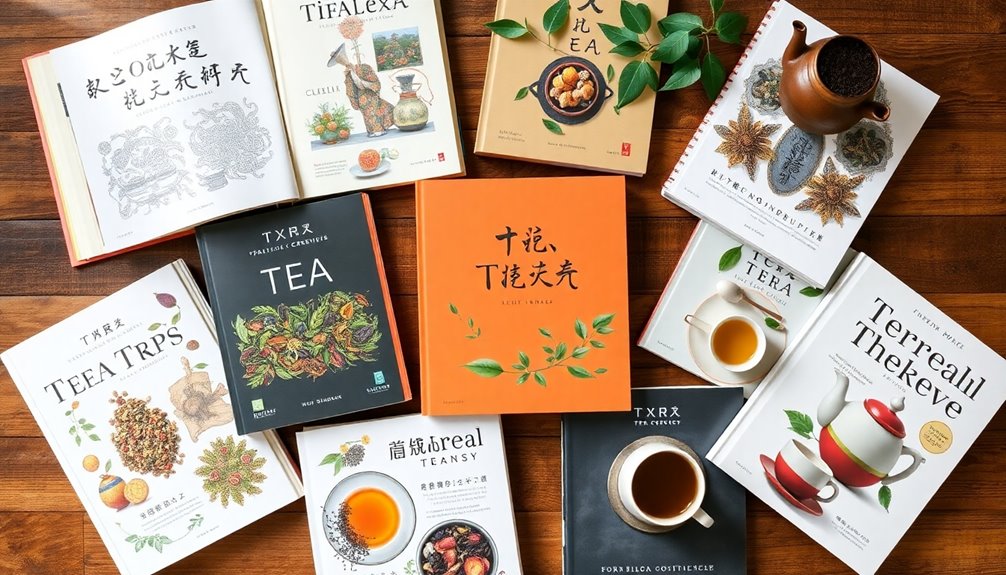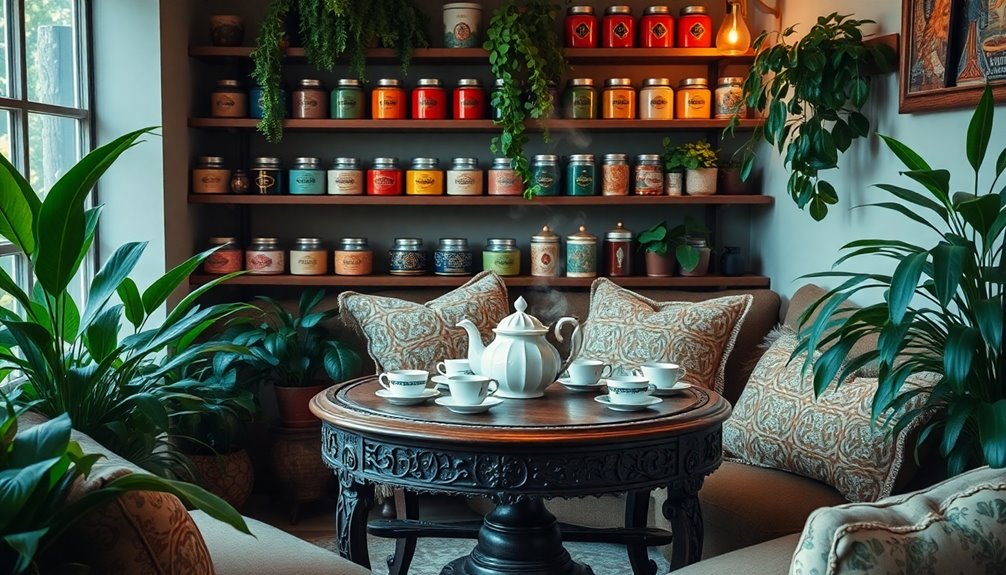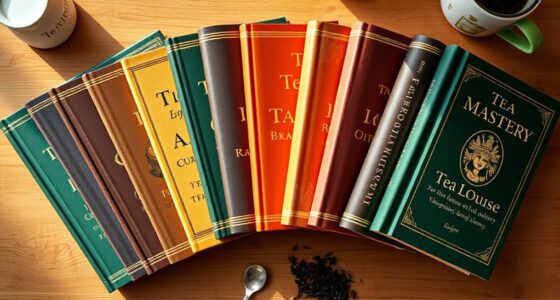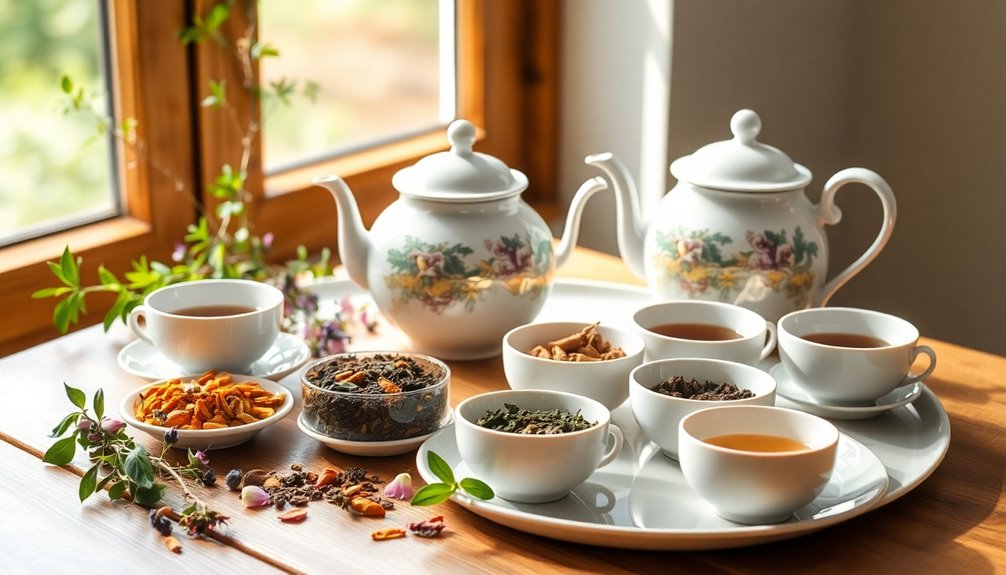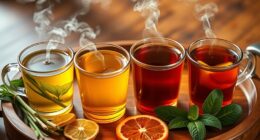Every tea lover should embrace this classic because it uncovers the fascinating history and cultural significance of tea. You'll discover how tea shaped global trade and geopolitical dynamics, influencing everything from the Boston Tea Party to diplomatic rituals. The book also highlights tea's numerous health benefits, from improving heart health to promoting relaxation. Plus, it addresses ethical production practices, ensuring fair treatment for workers. With practical tips to enhance your brewing skills, this classic serves as a comprehensive guide to the art of tea. There's so much more to explore that will deepen your appreciation for this beloved beverage.
Key Takeaways
- The classic offers deep insights into the cultural and historical significance of tea, enriching a tea lover's appreciation for its traditions.
- It highlights the health benefits of various teas, encouraging informed choices for improved well-being and enjoyment.
- Ethical considerations in tea production are discussed, promoting awareness of fair trade and sustainable practices in the tea industry.
- Engaging narratives foster community connections, inspiring tea lovers to share experiences and explore diverse varieties together.
- Practical brewing techniques and tools are presented, enhancing the overall tea preparation experience and encouraging personal exploration of flavors.
Introduction
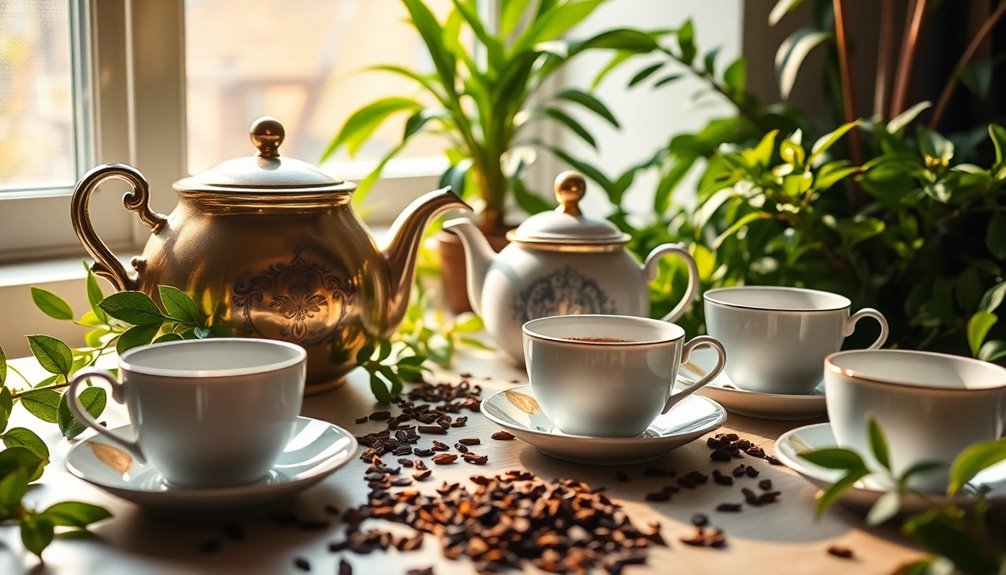
Tea is more than just a beverage; it's a world of flavors, traditions, and experiences waiting to be explored. If you're a tea lover, "Stuff Every Tea Lover Should Know" serves as your ultimate guide.
This book dives into the diverse varieties of tea, like Darjeeling, matcha, and Silver Needle, each with its own unique history and flavor profile. You'll learn how these varieties reflect the customs and traditions of their origins, enriching your appreciation for every cup.
The practical tips on tea preparation are invaluable, ensuring you brew each type to perfection. With techniques that enhance the taste and aroma, you'll elevate your drinking experience beyond the ordinary.
The engaging writing style makes even complex concepts accessible, whether you're a beginner or a seasoned enthusiast.
As you delve deeper into global tea traditions, you'll discover unique customs and ceremonies that highlight tea's cultural significance. This book not only broadens your knowledge but also deepens your appreciation of tea as an art form.
Tea's Rich Cultural History
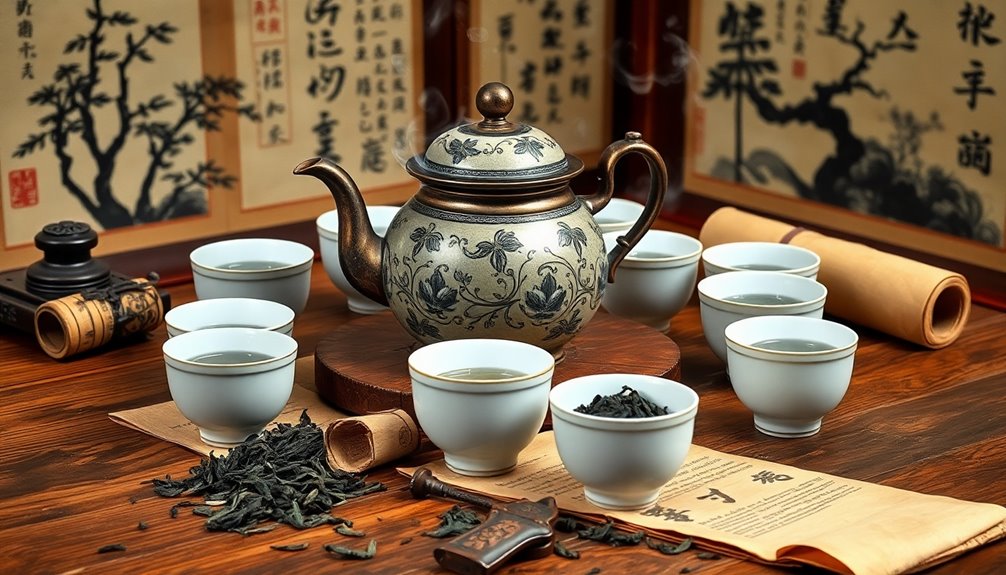
A steaming cup of tea carries with it a tapestry of cultural history that spans centuries and continents. Originating from the Camellia sinensis plant, tea's rich cultural history traces back to China around 2737 BCE, where Emperor Shen Nong first discovered it.
Over the years, tea transitioned into a significant player in global trade, particularly during the 17th and 18th centuries, becoming a prized commodity in Europe and the Americas.
Different countries developed unique customs and tea ceremonies that reflect their cultural values. The Japanese tea ceremony, or chanoyu, emphasizes aesthetics and mindfulness, while the Chinese gong fu tea ceremony showcases the artistry of brewing.
In the UK, afternoon tea emerged in the early 19th century, popularized by Anna Russell, the Duchess of Bedford, as a delightful social event.
Tea traditions extend beyond these ceremonies, with diverse significance in various cultures. From the Tibetan po cha, a salty butter tea, to the beloved Southern US sweet tea, each tradition tells a story. Caffeine content in tea varies widely depending on the type, influencing both its flavor and cultural significance.
Engaging with these rich customs deepens your appreciation for tea and connects you to its vibrant history.
Health Benefits of Tea
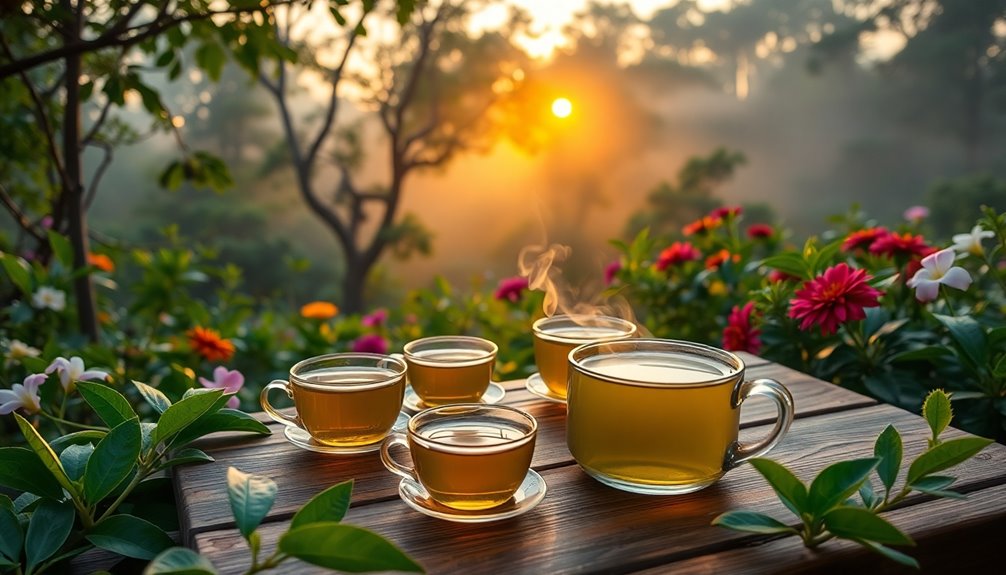
Numerous studies highlight the impressive health benefits of tea, making it a popular choice for those seeking a healthier lifestyle.
Tea is packed with antioxidants, particularly catechins, which help reduce oxidative stress and lower the risk of chronic diseases. If you're concerned about heart health, drinking green tea can be particularly beneficial; research suggests it lowers LDL cholesterol levels and improves overall cardiovascular function. Additionally, certain flower teas, such as Hibiscus tea, are known for their potential to help lower blood pressure. Moreover, chia seeds are a great source of omega-3 fatty acids, which can further support heart health. Herbal teas, like chamomile, are also praised for their calming effects and can be particularly soothing before bedtime. Furthermore, studies indicate that green tea may also aid in liver health by reducing liver enzyme levels.
Moreover, if you often experience digestive issues, herbal varieties like chamomile and peppermint can provide relief and alleviate gastrointestinal discomfort.
You might also find that consuming black tea enhances your cognitive function. Thanks to its caffeine and L-theanine content, it can boost mental alertness and focus.
For those looking to manage their weight, green and herbal teas can assist in weight management by boosting metabolism and promoting fat oxidation. Additionally, incorporating herbal teas into your routine may improve your overall well-being by supporting relaxation and reducing muscle tension.
By incorporating tea into your daily routine, you're not just enjoying a comforting beverage; you're also reaping numerous health benefits that support your overall well-being.
Tea's Role in Global Diplomacy
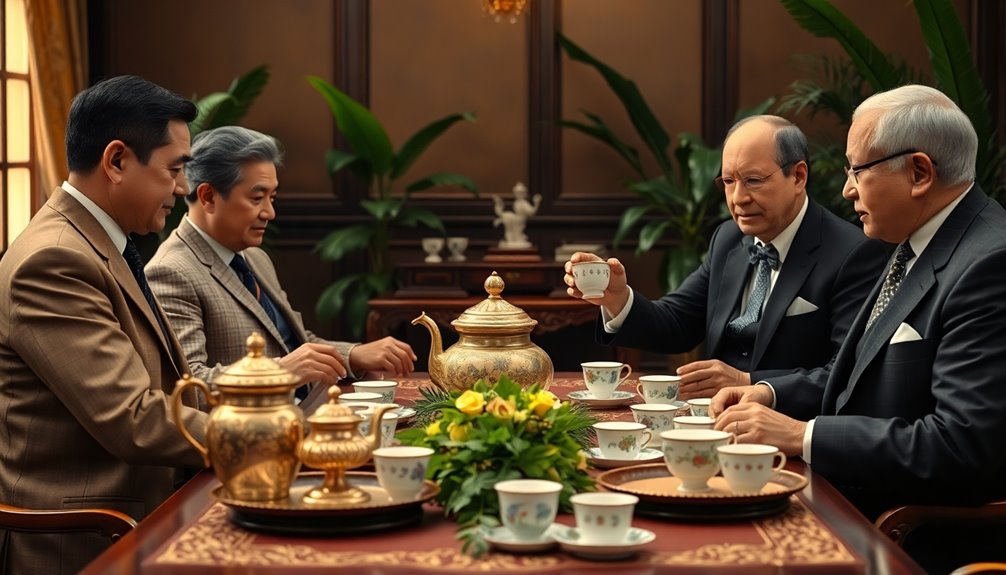
Throughout history, tea has served as more than just a beloved beverage; it's been a powerful diplomatic tool that fosters goodwill and strengthens international relations.
You've likely heard of tea diplomacy, where nations leverage tea to build bridges. For instance, during the Cold War, leaders like India's Jawaharlal Nehru and China's Zhou Enlai hosted tea ceremonies to promote dialogue and understanding. These moments highlighted how a simple cup of tea could ease tensions.
The tea trade's impact on geopolitical dynamics is significant too. The British East India Company established trade routes that not only influenced Britain and China but also led to the Opium Wars, shaping tea history.
Moreover, the Boston Tea Party in 1773, a protest against British taxation, galvanized American colonists and played a pivotal role in the American Revolution.
Today, tea remains a cultural bridge, with nations hosting tea events and celebrating heritage. Initiatives like the World Tea Expo exemplify how tea fosters cultural exchange, continuing its legacy as a diplomatic tool.
Tea Production Ethics
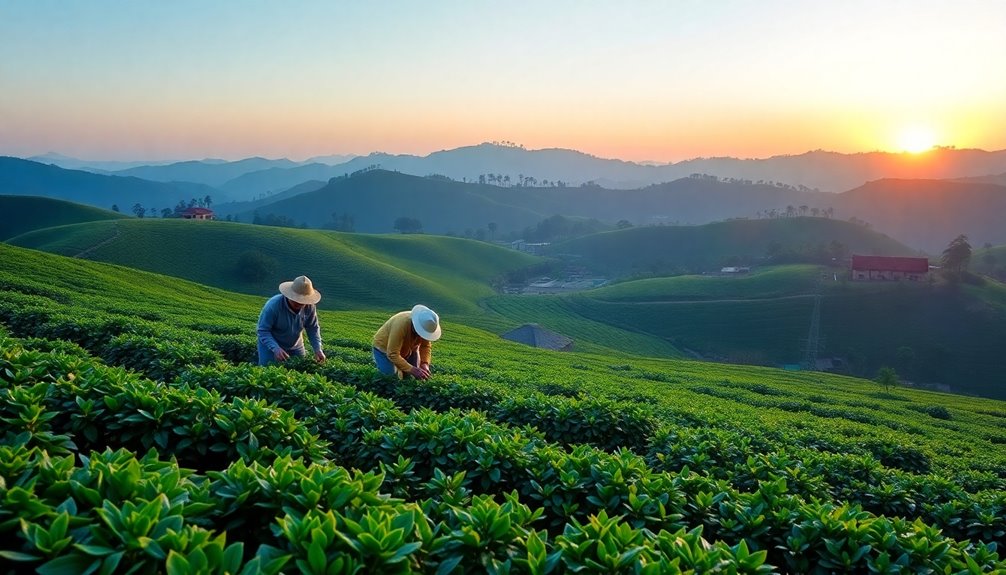
Ethical tea production is crucial for ensuring that the workers who cultivate and harvest your favorite beverage are treated fairly. In countries like India and Sri Lanka, where tea is predominantly grown, it's essential that workers receive fair wages and work in safe conditions. Fair Trade certification plays a significant role here, guaranteeing that producers meet social, economic, and environmental standards while empowering local communities.
When you choose organic tea production, you're not just supporting ethical practices; you're also promoting biodiversity by avoiding synthetic pesticides and fertilizers. Transparency in the tea supply chain allows you to trace the origin of your tea, encouraging ethical sourcing that benefits those who grow it.
Additionally, certifications like Rainforest Alliance and UTZ ensure that farming practices protect ecosystems and biodiversity, preventing deforestation and habitat destruction.
Practical Applications
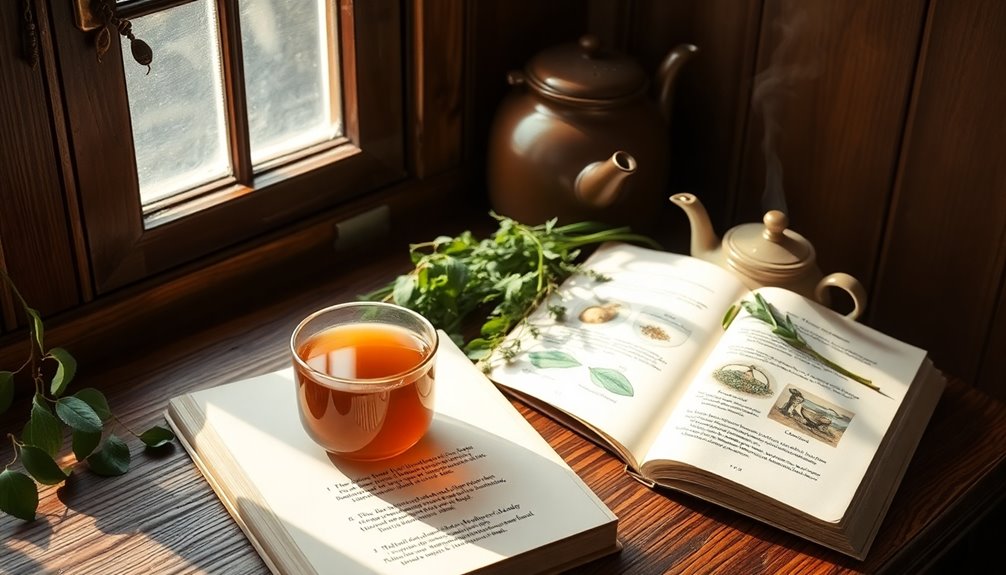
For tea enthusiasts eager to elevate their brewing skills, understanding the practical applications of tea preparation can make all the difference. "Stuff Every Tea Lover Should Know" provides essential insights into practical brewing techniques that focus on water quality, temperature, and steeping time to ensure optimal flavor extraction from various tea varieties. Incorporating organic tea practices into your brewing process can also enhance both flavor and health benefits. Additionally, the choice of brewing method plays a crucial role in the final taste of your tea. Using high-quality ingredients, such as essential oils for hair growth, can also provide additional benefits when creating unique tea blends. Furthermore, using fresh ingredients like organic produce can enhance the overall quality of your tea.
You'll discover a comprehensive tea tasting guide that empowers you to articulate your preferences, allowing for deeper discussions with fellow tea connoisseurs.
The book also features an illustrated guide to tea accessories, helping you choose the right tools like teapots and infusers that enhance your tea preparation experience.
Additionally, if you're looking to host themed tea parties, this classic offers tips on pairing teas with delightful snacks and desserts, along with creative recipes for tea cocktails. Moreover, you'll learn about optimal steeping times for different tea varieties, ensuring that each cup is brewed to perfection.
These practical applications not only enhance your enjoyment but also elevate your skills as a tea lover. By mastering these techniques and incorporating the right accessories, you can transform your tea experience, making each cup a celebration of flavor and tradition.
Conclusion
In conclusion, you shouldn't miss out on exploring the classic world of tea. With its rich cultural history, impressive health benefits, and surprising role in global diplomacy, tea offers so much more than just a comforting beverage. Plus, understanding the ethics of tea production can enhance your appreciation even further. So, grab a cup, dive into this timeless story, and let every sip connect you to the fascinating journey of tea through the ages.

